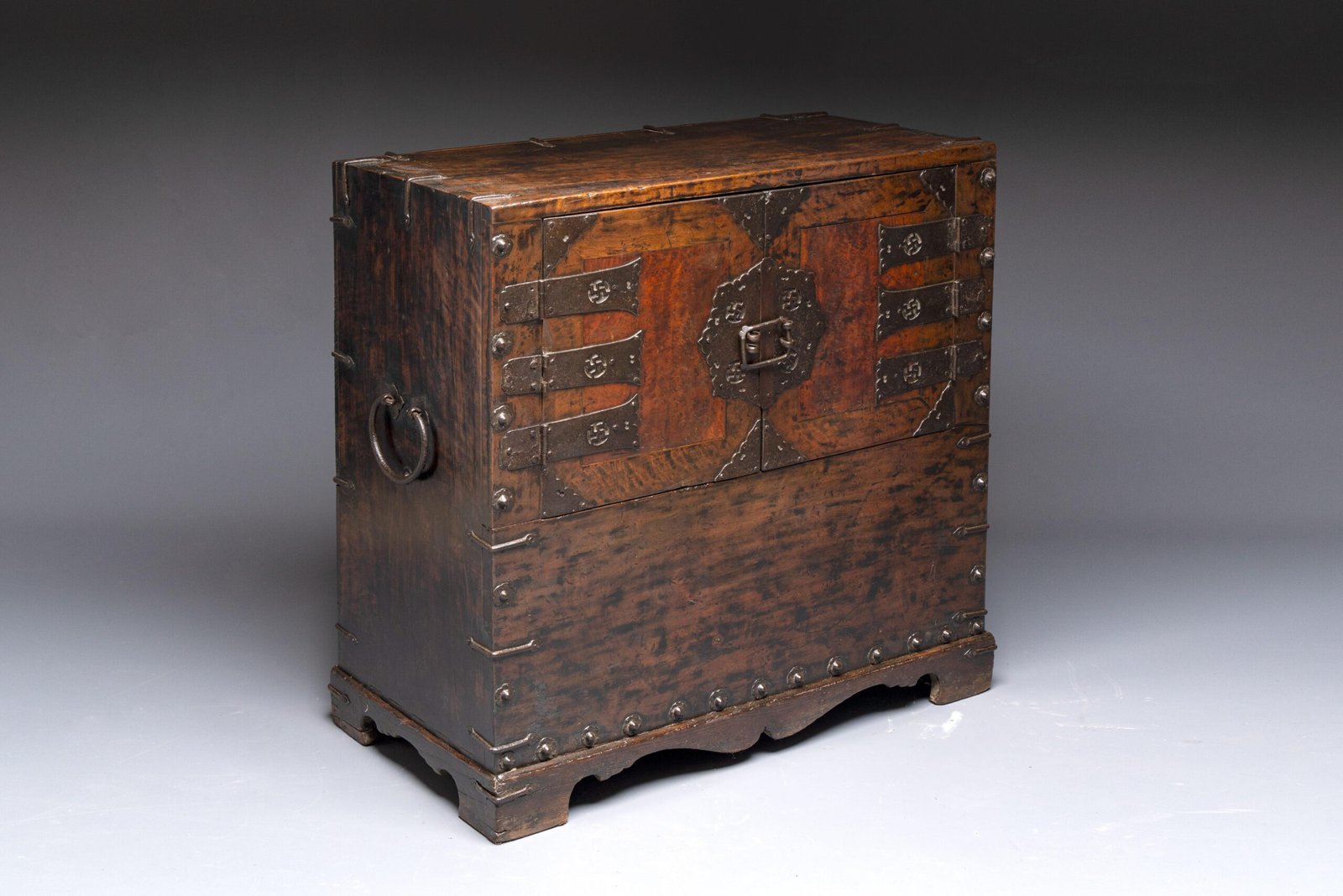Jeonju-jang refers to wooden furniture made in Jeonju, North Jeolla Province, during the Joseon Dynasty and used by the middle-upper classes. It is valued as local cultural heritage for its distinctive shapes, metal ornaments, and multifunctional design tailored to users’ needs.
Jeonju was a key residential center where landowners and yangban officials from the Honam Plain gathered. Consequently, demand for decorative furnishings and accessories for the sarangbang (men’s study or reception room) was high, and the lumber trade was more developed there than in other regions.
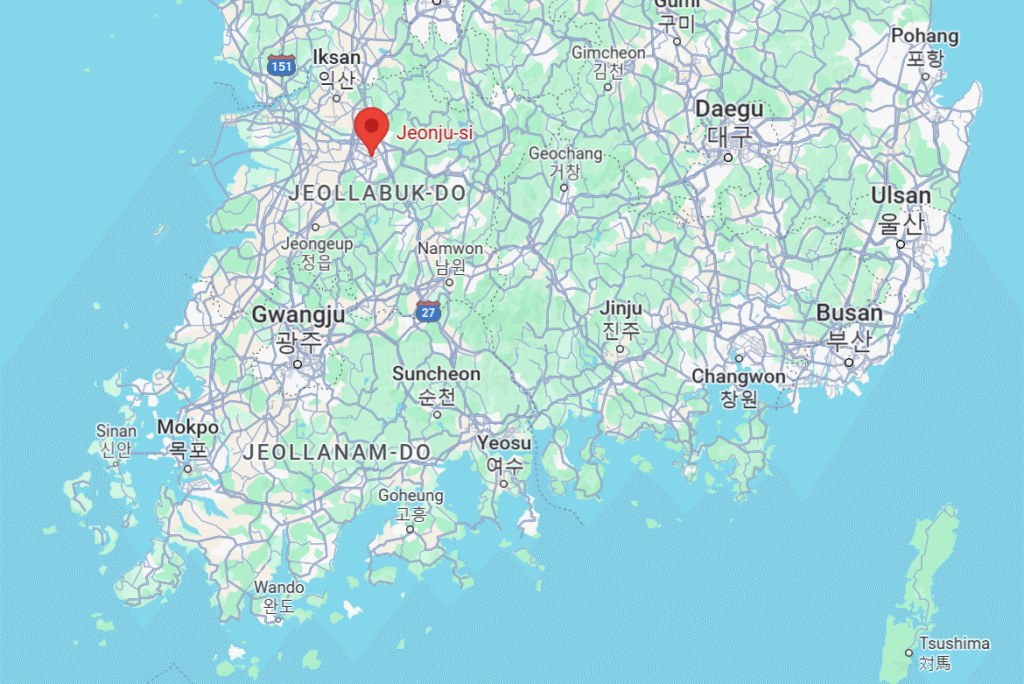
Since ancient times, Korea’s agricultural society developed along river basins, with regions separated by mountains and mountain ranges. This terrain limited interregional transportation and fostered isolation, encouraging the growth of distinct regional lifestyles and cultural traditions.
In jeonju area, craftsmanship thrived thanks to the ready supply of fine materials, including zelkova and persimmon wood with their attractive natural grain.
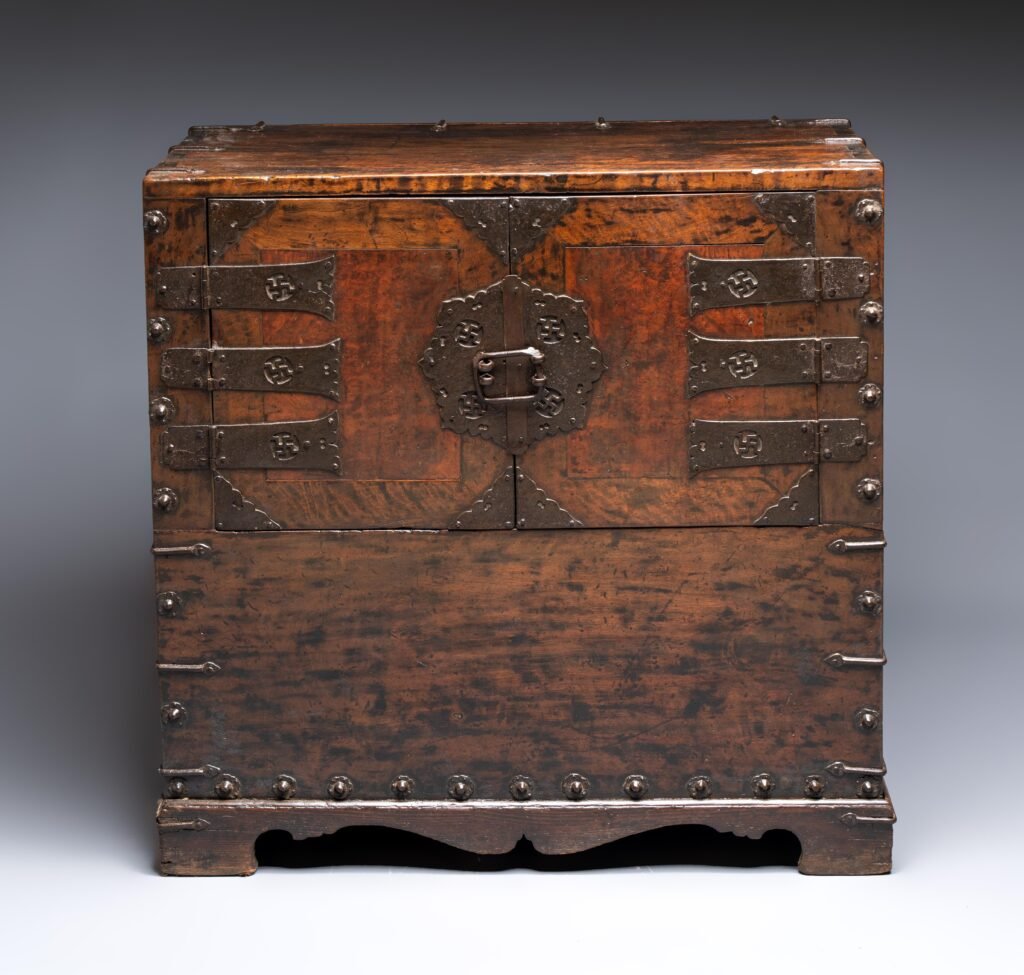
Collection: Galerie Raoul Dutillieul, Tournai, Belgium.
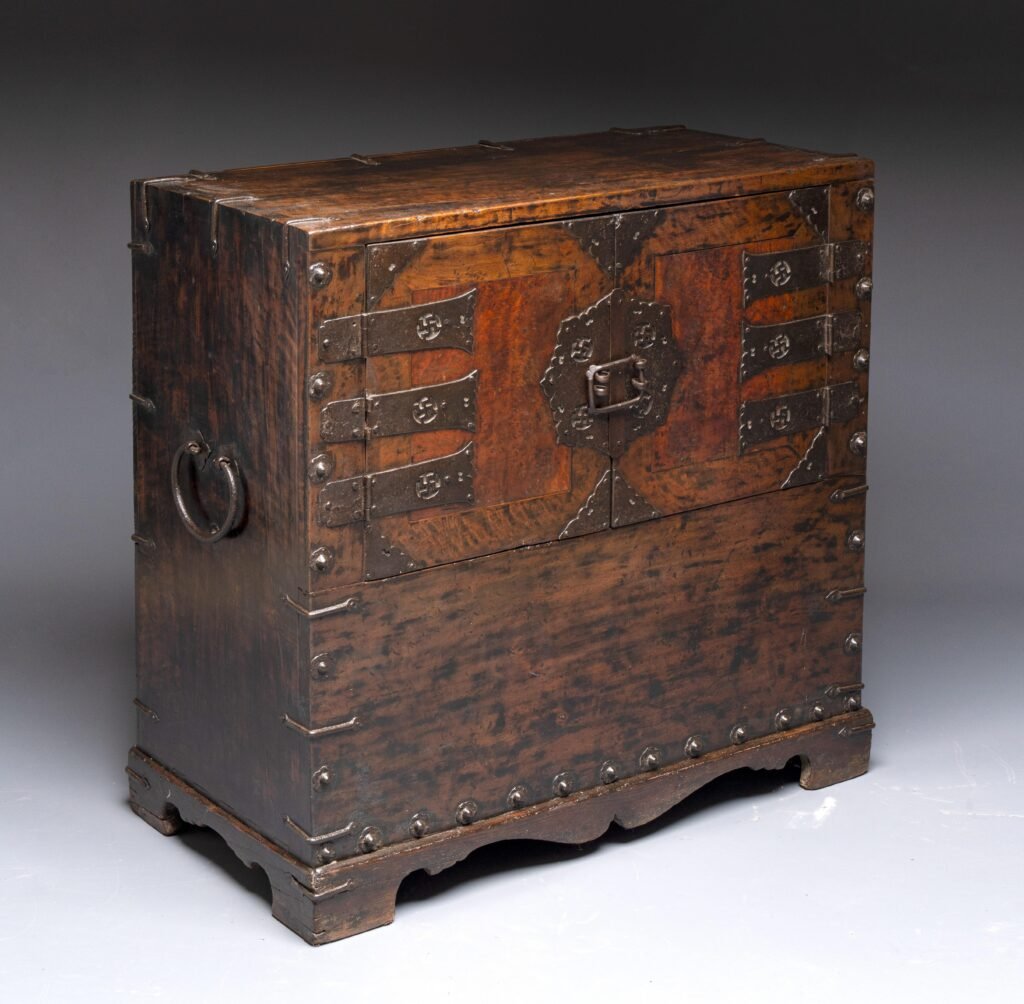
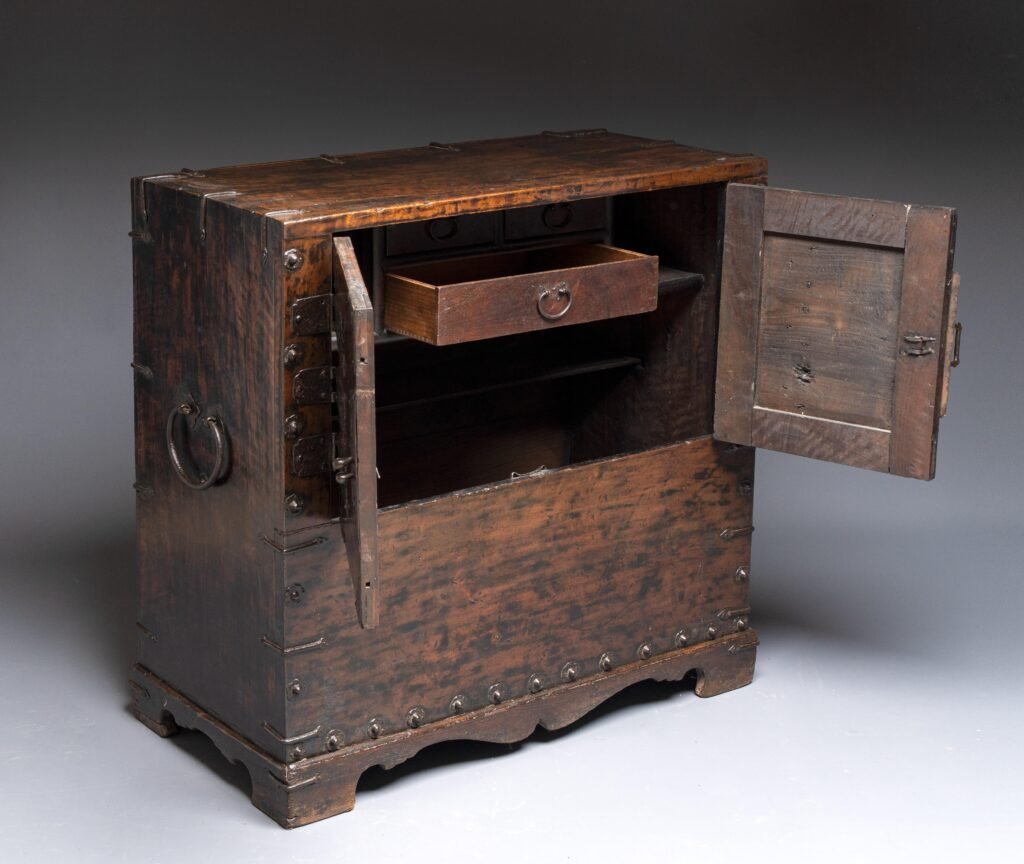
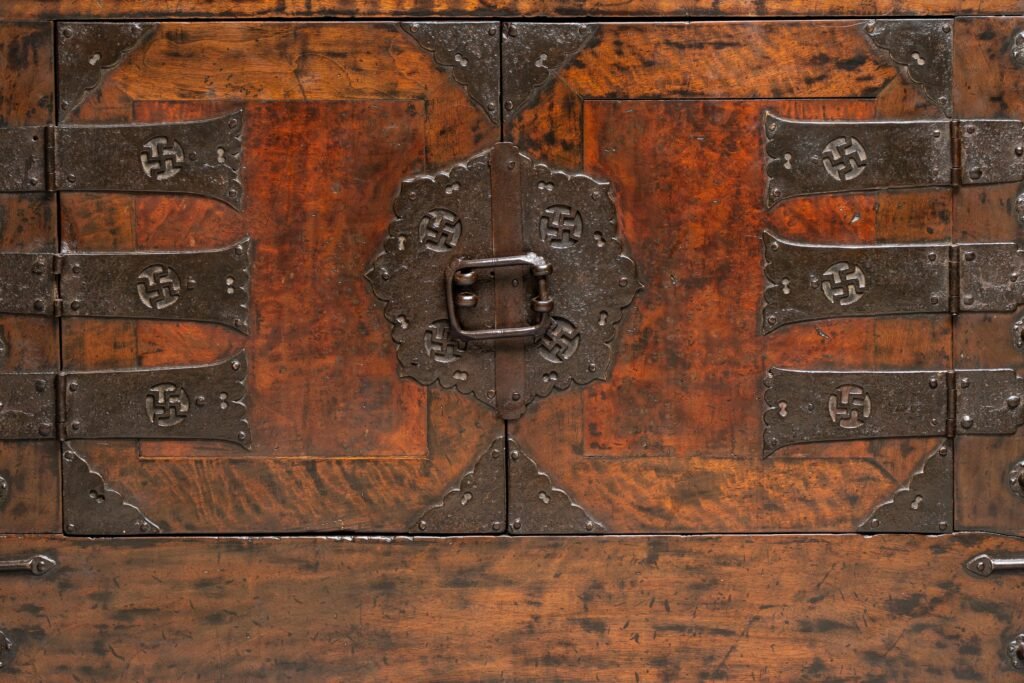
This analysis is based on a study of Jeonju-jang cabinets by Da hee Baik and Seung Taek Lim from the Department of fine Arts, College of Art, Chonbuk National University in Jeonju. Entitled “A study on the structural characteristics and metal ornament of Jeonju-Jang”. It was published in the Journal of the Korea Furniture Society, Vol. 28 No. 3 July, 2017.
Jeonju-jang has been cataloged in museums under various regional names prefixed with “Jeonju,” including Jeonju Bandaji (blanket chest), Jeonju Mungap (stationary chest), Jeonju Ichong jang (two-level clothing chest), Jeonju Samchung jang (three-level clothing chest), Jeonju Chaekjang (book chest), Jeonju Beoseon jang (socks chest), and Jeonju Morijang (headside chest). This variety reflects how Jeonju-jang evolved from a simple storage chest sold in bulk into a multifunctional cabinet according to the user’s needs.
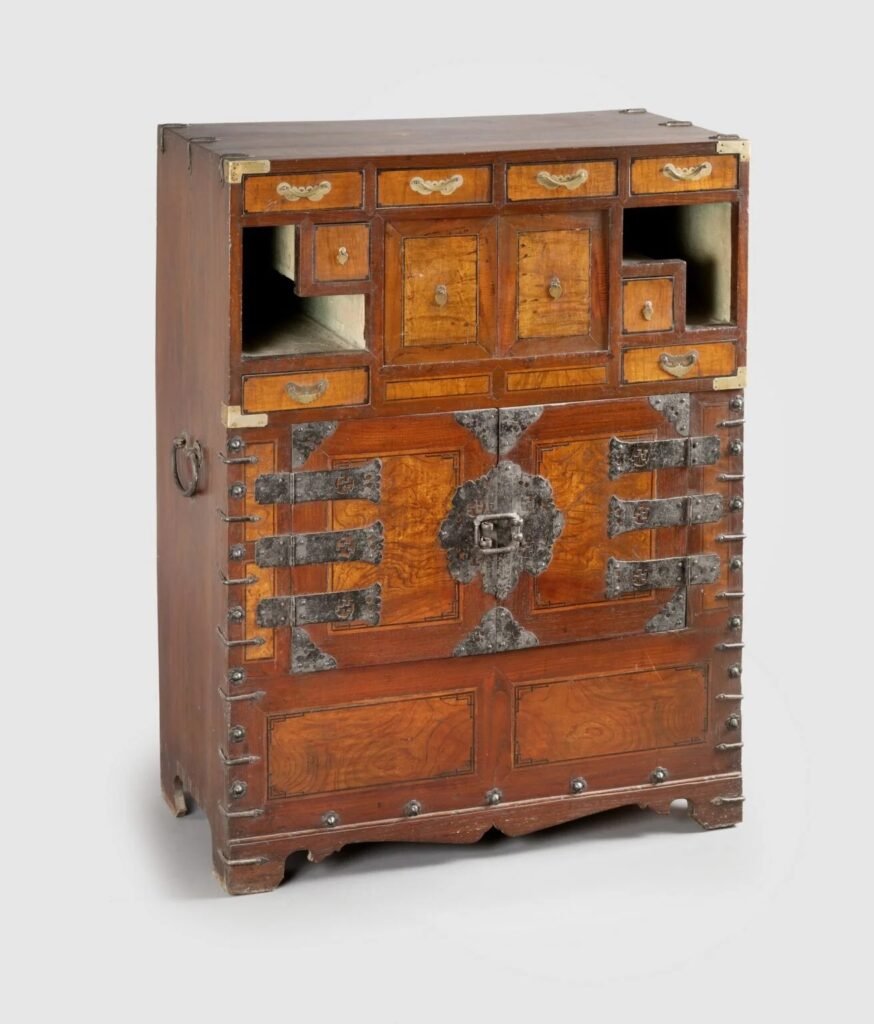
H. 98,8cm, W. 74,7cm, D. 36,4cm.
Collection: National Folk Museum of Korea. The upper section feature a “Mungap” design usually used on stationary chests.
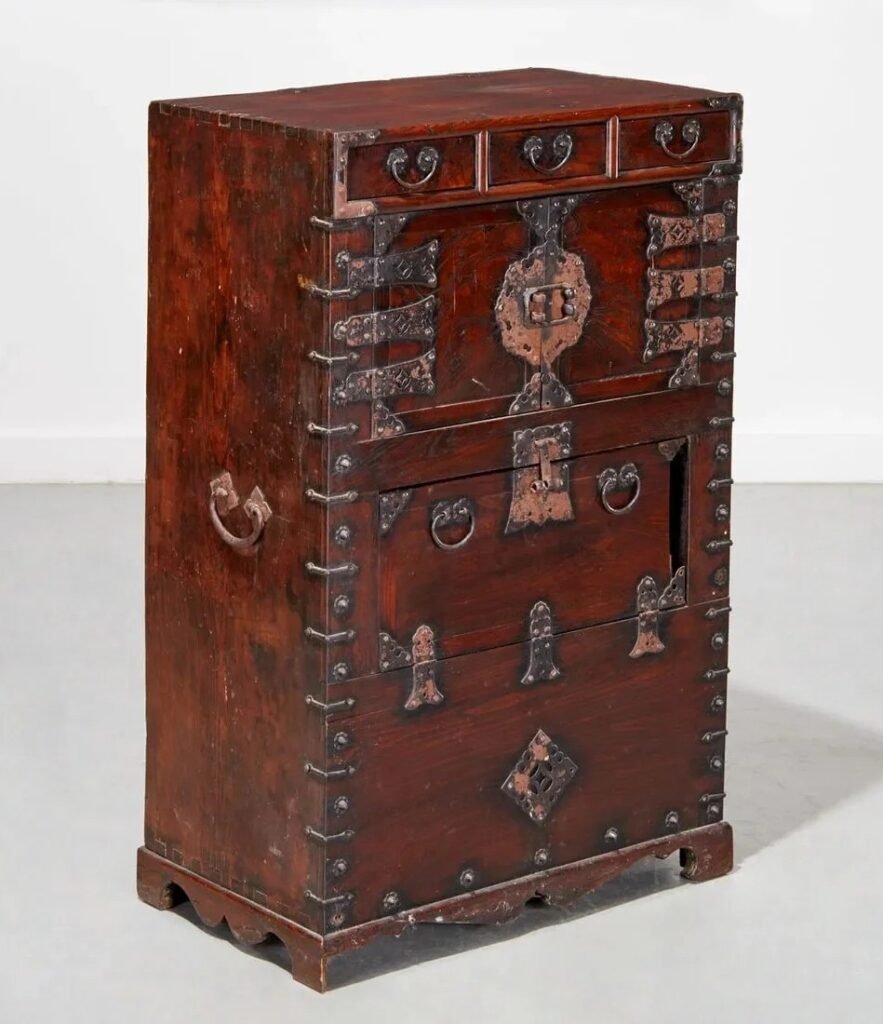

H. 121,5cm, W. 88cm, D. 39cm.
Also called a Jeongju wardrobe, this chest is from Jeongju city, capital of North Jeolla province.
Collection: National Museum of Korea. Seoul.
These cabinets share a similar structural design, appear to have been custom-made for convenience, and were used interchangeably in both the sarangbang (men’s reception room) and anbang (women’s quarter).
Most of the chests called Jeonju Jang are from the 19th century (Late Joseon dynasty).
In the early stages, these cabinets were small enough to serve as bedside chests, averaging about H. 50 cm × W. 50 cm × D. 30 cm. Their simple design featured a compact body with double doors opening to a compartment that contained small drawers at the top.
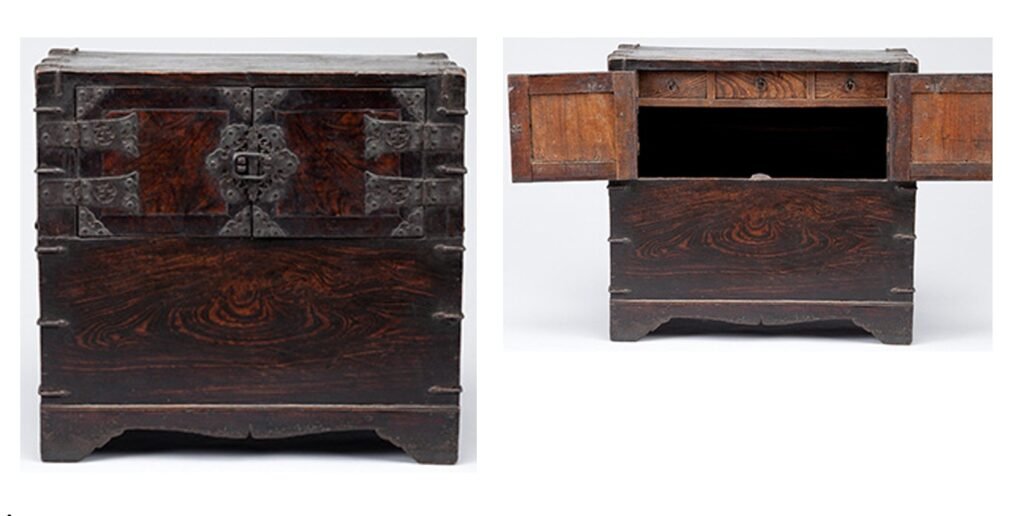
Collection: National Folk Museum, Korea.
Their design was gradually modified by adding a row of small external drawers at the top and by creating a multi-level cabinet with double doors above a lower section featuring a bandaji-style drop-front panel or more complex designs.
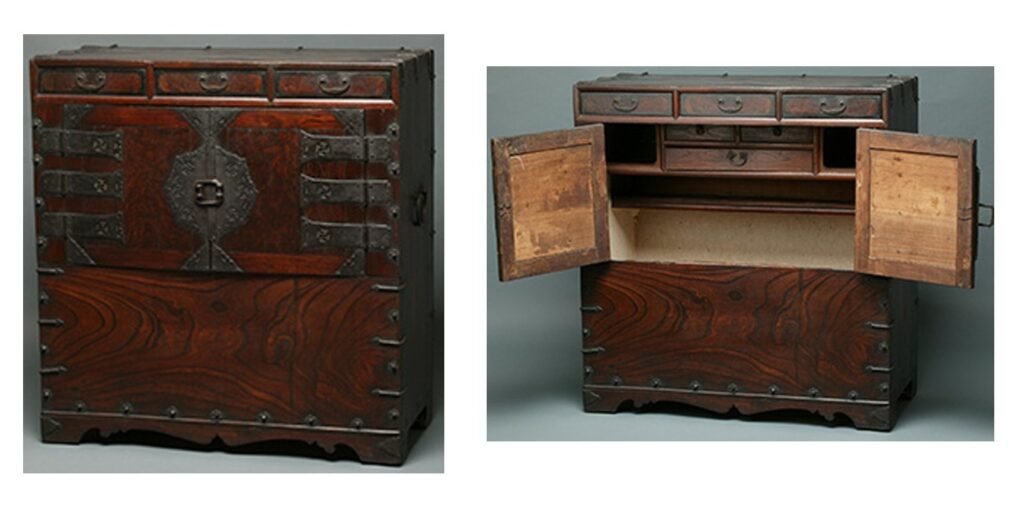
Collection: National Folk Museum, Korea.
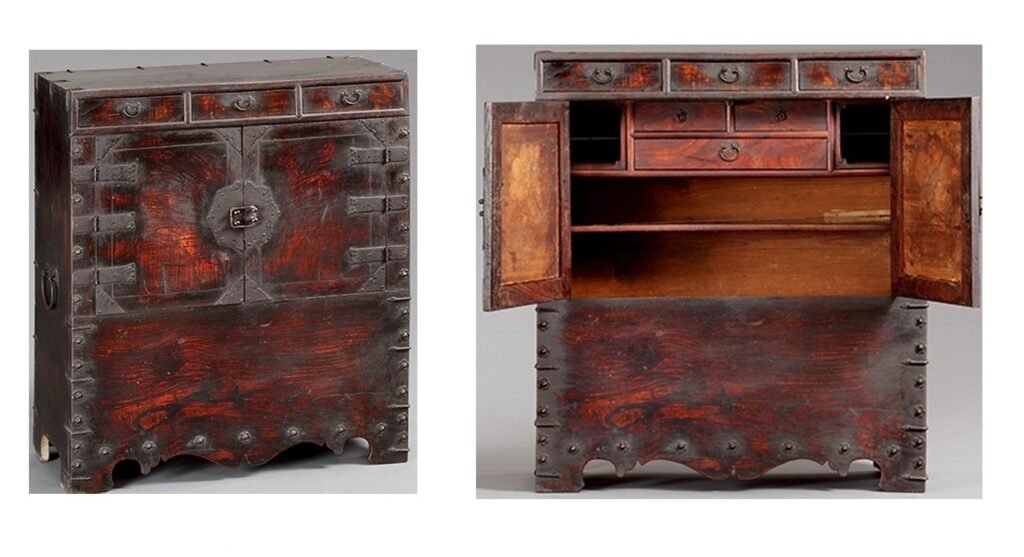
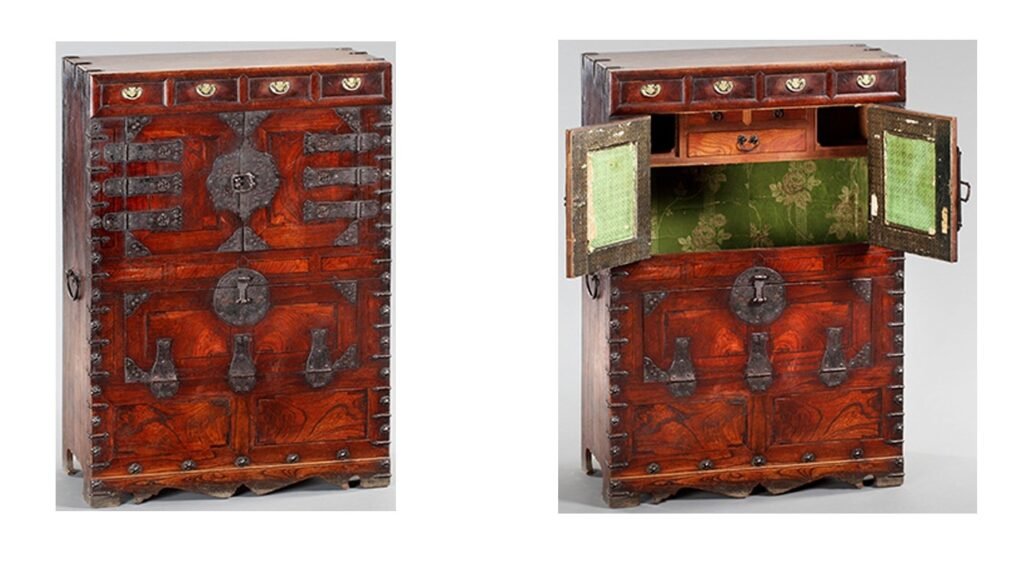
Collection: Onyang Folk Museum, Korea.
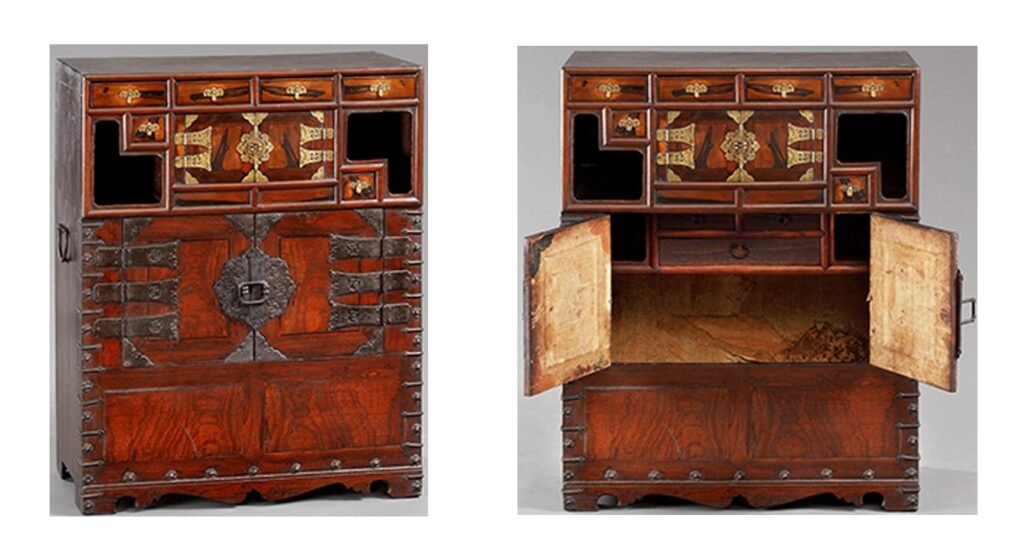
Collection: Onyang Folk Museum, Korea.
FITTINGS DESIGNS
Earlier Jeonju chests were fitted with cast-iron hardware. Over time, brass began to be used on the upper sections of the chests. In the 20th century, particularly during the Japanese colonial period, nickel gradually replaced the previously used materials.
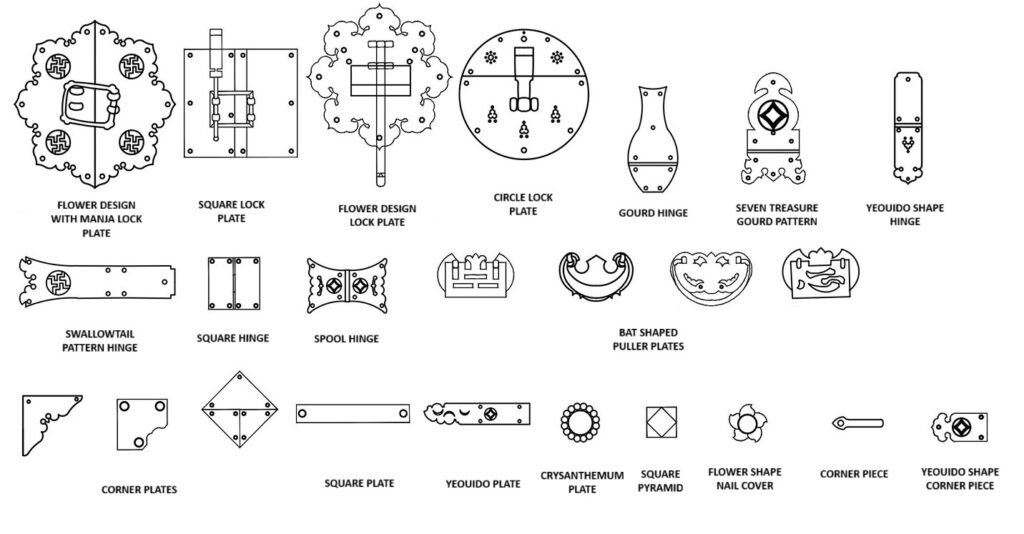
DESIGN EVOLUTION ET THE END OF THE JOSEON DYNASTY.
From the 19th century through the early 20th century—especially during the Japanese colonial period (1910–1945)—the design of the Jeonju-jang gradually evolved. Chest dimensions increased significantly, leading to changes in construction methods.
In the 19th century, most pieces featured a front made from large wooden panels. During the colonial era, however, the fronts were built with frames and inset panels.
Joseon-period examples were typically one or two tiers, but by the early 20th century many had two or three. The number of metal fittings also grew, and iron and brass were gradually replaced with nickel.
On earlier pieces, the top of the chest was made from a single panel, whereas later examples featured a framed, inset panel that protruded slightly above the chest.
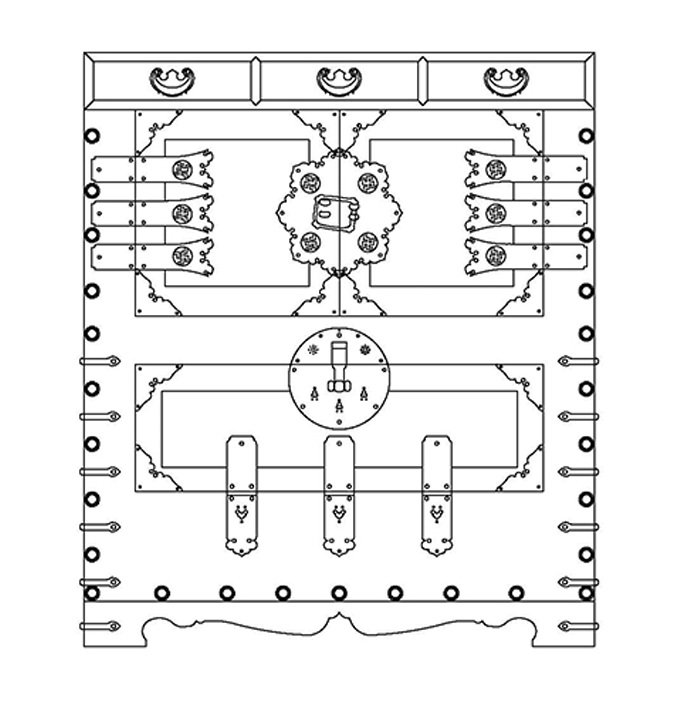
in late period of Joseon dynasty, Late 19th century. (Two levels type).
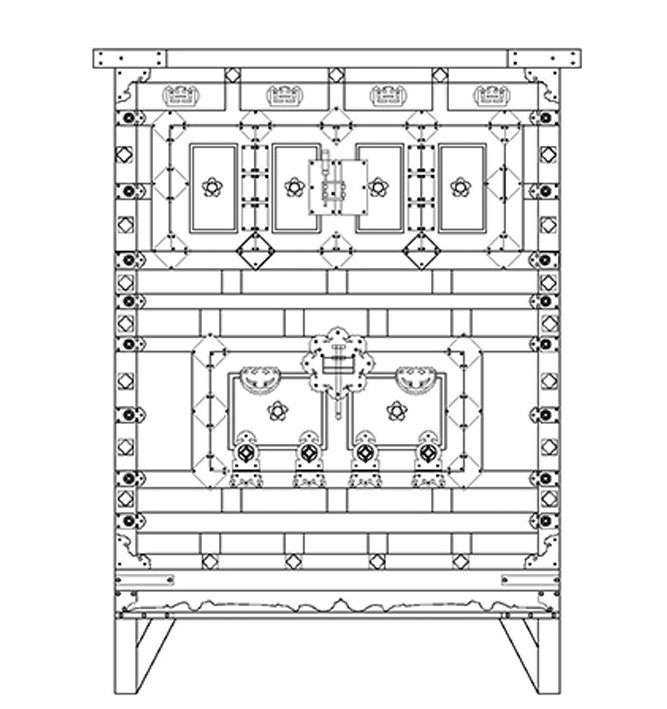
In Japanese colonial period 1910 – 1945. (Two Levels type).


Collection: National Folk Museum of Korea.
Right. Jeonju Jang. H. 110cm, W. 85cm, D. 38cm. Japanese colonial period – early 20th century.
Collection: Jeonju History Museum.
JEONJU VS NAMWON & YEONGWANG STYLES IN JEOLLA PROVINCE & CHEONGJU STYLE IN CHUNGCHEONG PROVINCE.
In these two neighboring provinces (Jeolla Do and Chungcheong Do), certain pieces of furniture — notably bandaji chests — shared common features.
Identification can sometimes be difficult, as certain chests from Chungcheong Province (Cheongju bandaji) or the Namwon and Yeongwang areas of Jeolla Province could feature similar designs. Because of these similarities, Namwon or Chungcheong-do pieces are sometimes displayed or cataloged as Jeonju-Jang in museums and other collections.
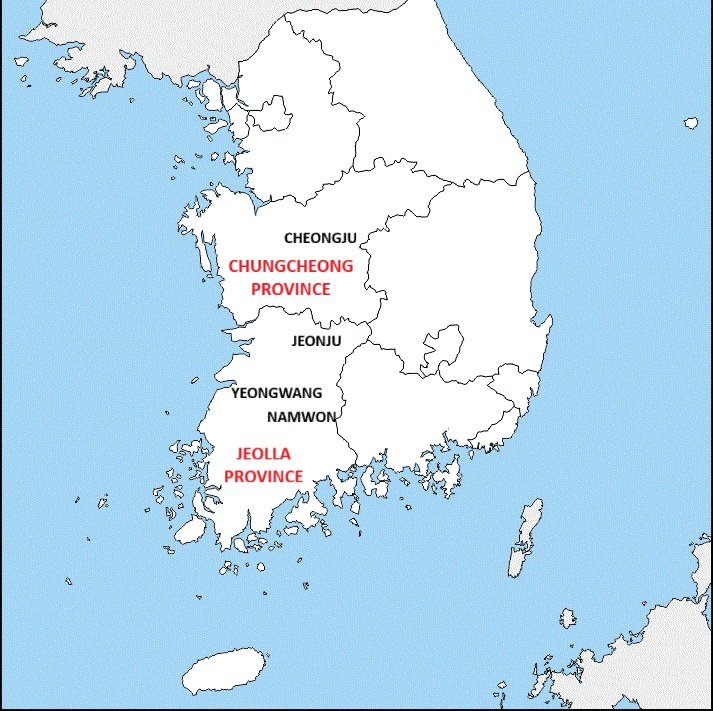
Analyzing the main differences between the Jeonju and Chungcheong styles: On a Jeonju chest, the bandaji drop panel is smaller and positioned at the center of the lower section, whereas on a Chungcheong-jang the drop-front panel extends to the edges of the sides. In addition, the top panel of a Jeonju-jang is finished flush with the side panels, while that of a Chungcheong-jang projects slightly beyond them.
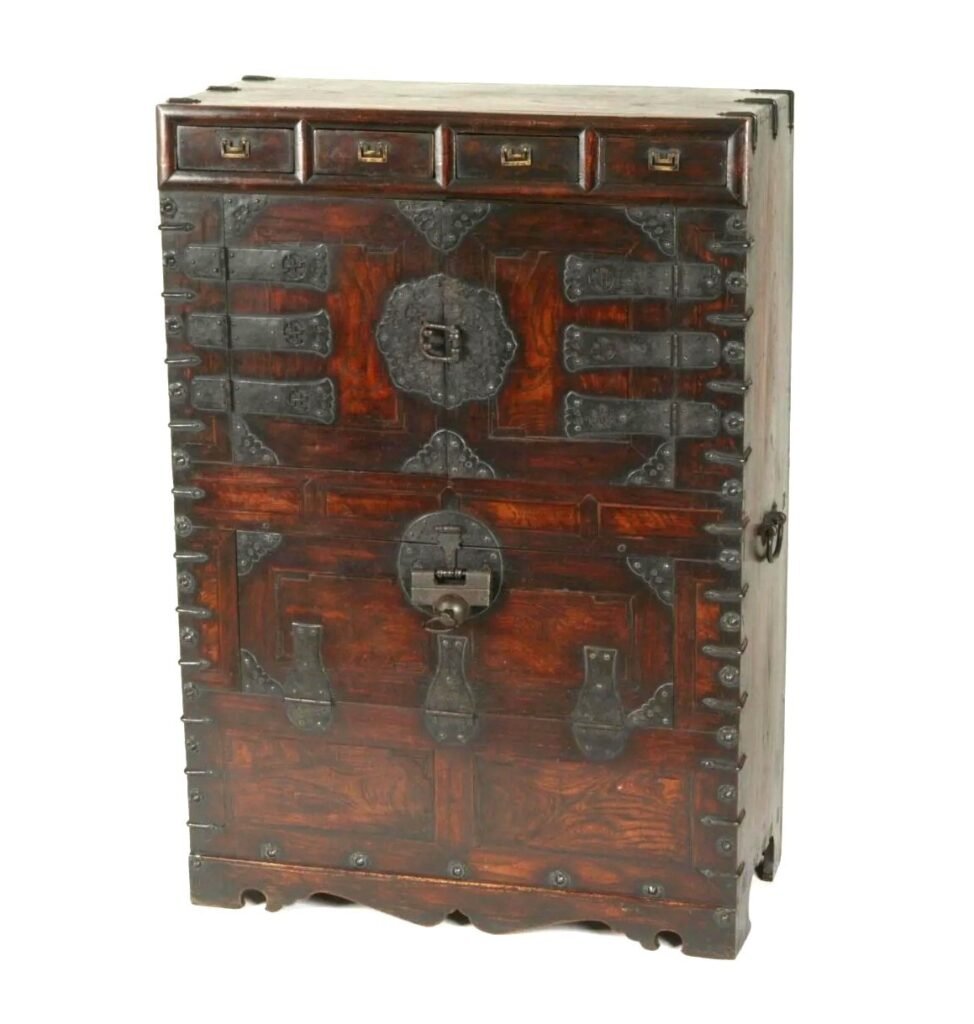
JEONJU JANG. Pine & elm wood. Iron fittings.
H. 125cm, W. 86cm, D. 40cm.
Collection: National Folk Museum of Korea.
The chest is made from large wooden planks and features three to four drawers beneath the top panel. Additional drawers and a shelf are housed within the double-door compartment. It stands on attached legs. Earlier examples were fitted with cast iron hardware, while later ones used iron & brass fittings. Finally, the panel that folds down over the lower section of the chest is smaller in size and occupies the center of the piece.
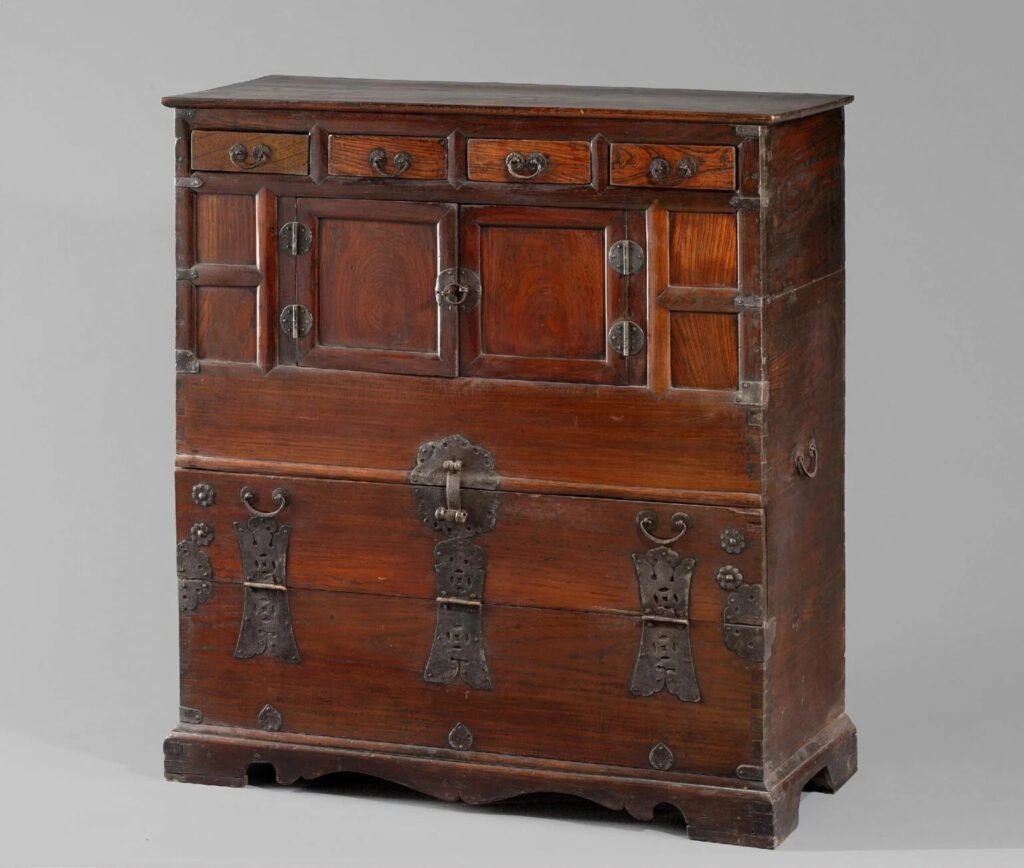
CHUNGCHEONG BANDAJI.
Collection National Folk Museum of Korea.
This piece from the neighboring province has a design similar to the Jeonju chest (Jeonju Jang). However, it is constructed differently. The wood is generally much thicker, and the upper section, which includes double doors, is made of framed panels inserted into a structural frame. The top plate is larger than the body of the chest and extends beyond it on each side. It features a smaller number of fittings. The base on which it rests is built separately from the rest of the piece.

H. 110cm, W. 93cm, D. 41cm. Collection: Busan metropolitan City Museum.
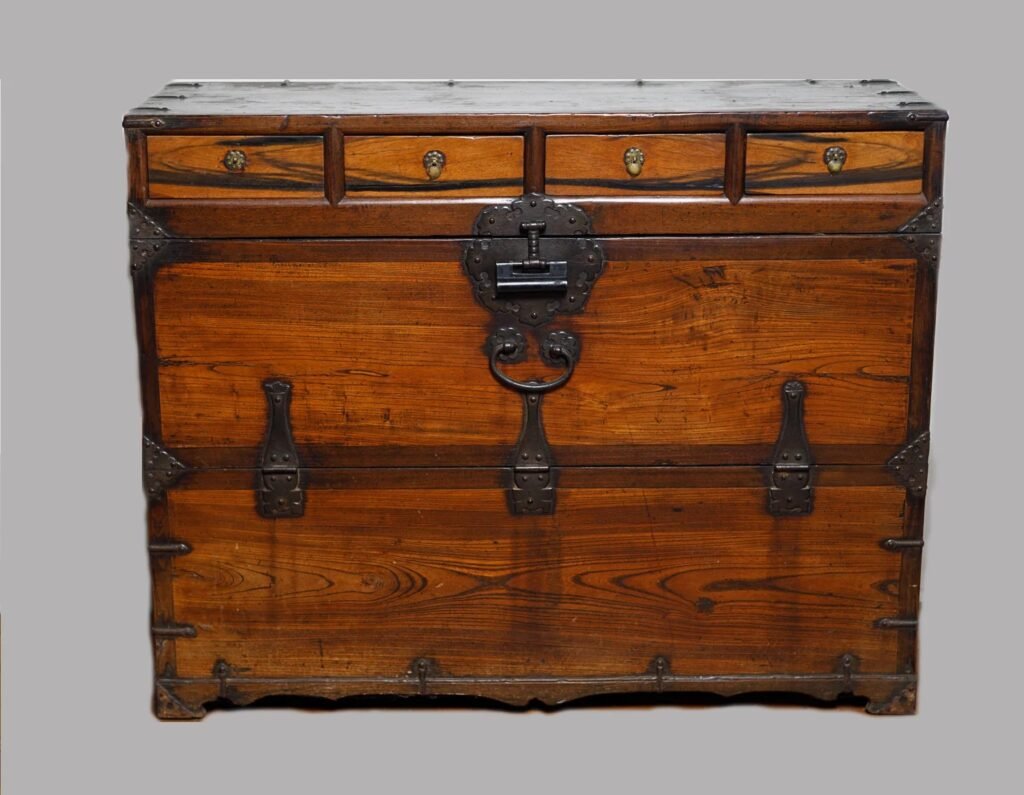
NAMWON BANDAJI.
Three top drawers made from persimmon wood. Red pine wood body. Iron fittings.
Elaborate legs.
Jeolla Do, Korea. Private collection.
Namwon bandaji are generally large in size and display restrained ornamentation. A variant design, however, closely resembles the Jeonju bandaji, featuring a more elaborate structure that may include exterior drawers on the upper section or a pair of double doors. The metal fittings are fewer and differ in form, often characterized by delicate gourd-shaped motifs. In this version, the lower hinged panel extends fully across the base of the chest.
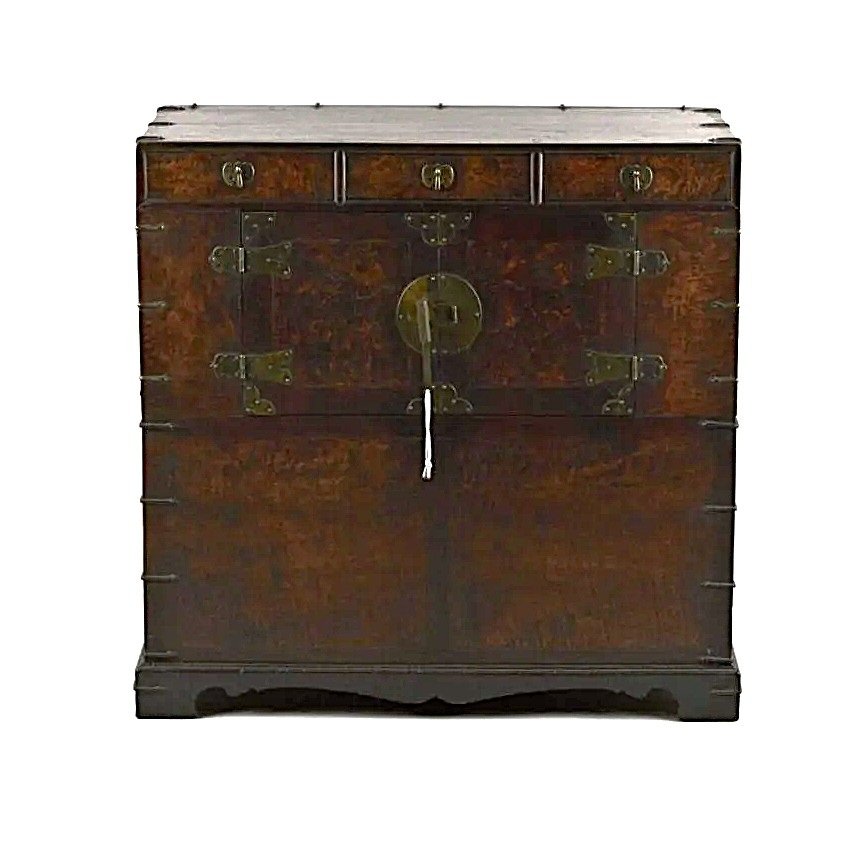
H. 89cm, W. 41cm, D. 30cm.
Collection: Jeonju National Museum.
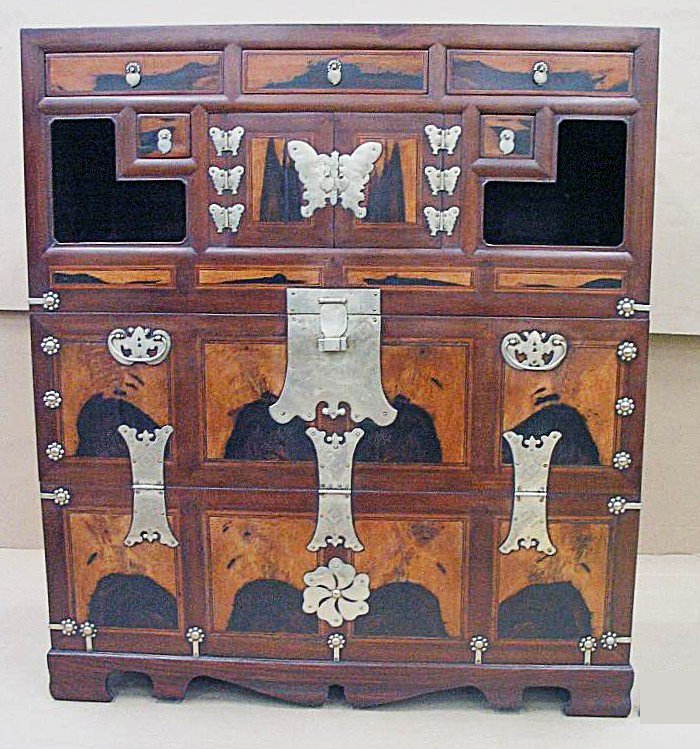
Collection: National Museum of Korea. Seoul.
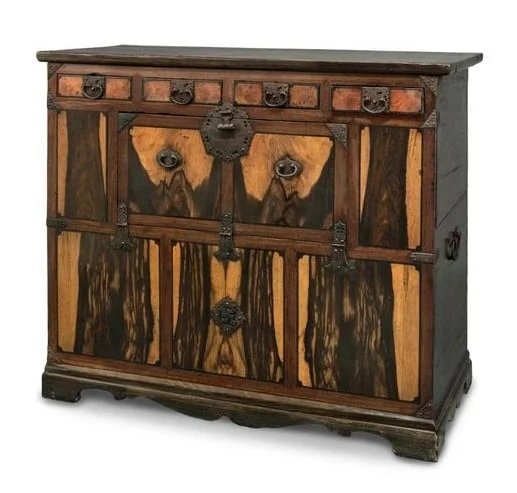
YEONGGWANG BANDAJI.
Persimmon wood, iron fittings.
H. 95cm, W. 111cm, D. 50cm.
K Auction, Seoul, Korea.
Four top drawers and a middle opening panel which doesn’t extend all the way. This type of Bandaji was also used as a document chest amongst elites. Metalwork display similarities with “Gochang” bandaji such as: round lock plate, “Bat” design puller plates, swallowtails hinges and the square bottom decorative plate.

